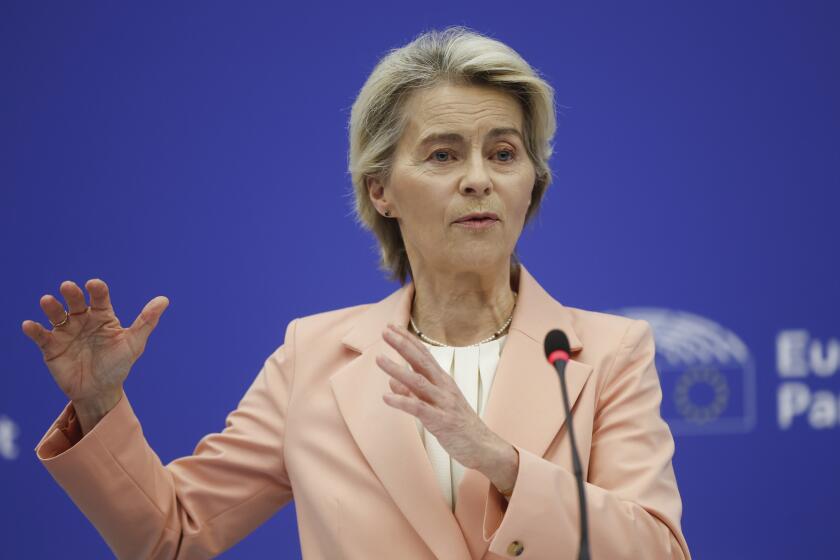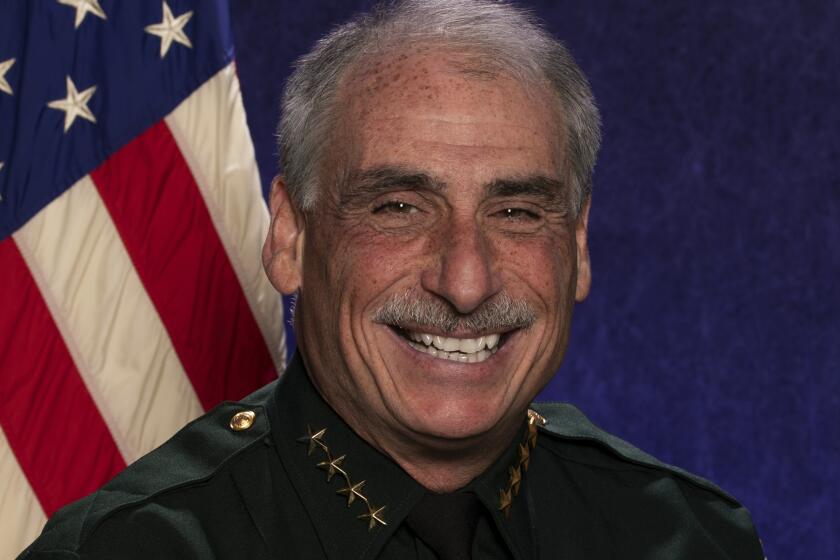Cocaine trafficking keeps Ecuador anti-drug authorities busy
The beat cop quickly discovered why the three men at the entrance to the storage yard had bolted as he pulled up in his patrol car.
Inside the walled enclosure he saw 3 tons of cocaine and a large-scale processing lab, evidence of Ecuador’s growing importance as a trafficking hub for illegal drugs.
The mid-December raid in this port city’s Bastion Popular industrial zone capped a record year for Ecuador’s counter-narcotics police. They seized 63 tons of cocaine, twice as much as in 2008, and destroyed seven drug-processing laboratories, up from two.
Guayaquil’s sprawling port and maze of estuaries and waterways have become a favored staging area for drug shipments to the U.S. and Europe. So has the city’s international airport, where arrests of “mules,” or human smugglers, was up 15% last year from 2008.
The week before the Bastion Popular raid, Ecuadorean anti-narcotics police pulled off another major seizure in Guayaquil, netting more than 5 tons of cocaine mixed with fruit pulp headed for Portugal.
In October, police arrested six Colombians in nearby Santo Domingo de los Tsachilas province who had hidden nearly a ton of cocaine inside hundreds of hollowed-out pineapples bound for Spain.
During the year’s most spectacular raid, police in May confiscated 28 tons of cocaine-laced molasses that was about to be shipped, allegedly by Russian mobsters, to Europe.
Russia, where a kilo of cocaine sells for $100,000 wholesale, or four times the U.S. price, is now the world’s hottest market for the drug, police say.
Traffickers’ growing use of Ecuadorean labs to process cocaine from unrefined paste imported from Peru and Colombia is an especially worrisome trend, authorities say.
The increase is a result of tighter controls in those two countries on chemicals used to process the powder, said police Col. Joel Loaiza, Ecuador’s anti-drug chief.
International experts have estimated that as much as 200 tons, or one-third of the cocaine produced in Colombia, may be transiting through Ecuador, four times the estimated percentage a decade ago.
Combating the cartels has become more complicated since U.S. surveillance aircraft left the Manta air base in June after President Rafael Correa refused to renew a lease agreement, officials say. The shift of those flights to Colombia -- as well as the departure of U.S. Coast Guard vessels from Ecuadorean waters -- has lengthened response time to suspicious activity.
The upshot: a sharp decline in captures of cocaine-laden fishing boats and others that head out to sea to rendezvous with larger smuggling vessels.
“Manta was our eyes and ears,” said one Ecuadorean police official who asked not to be identified because of security concerns. “They had equipment we don’t have.”
Traffickers, including Colombian paramilitary groups, leftist rebels and drug gangs, are considered responsible for an increase in sicariato, or contract killings.
U.S. anti-drug officials praise Loaiza and his police force for fighting a war for which they are relatively underequipped.
Ecuador received $7 million in U.S. anti-drug aid last year, less than half the amount received by Peru or Bolivia, yet seized more than twice the tonnage of cocaine confiscated by either of those countries, U.S. officials said. (Colombia, which gets $500 million in anti-drug and anti-terrorism aid through Plan Colombia, seized about 100 tons.)
“In the global context, we had a very successful year,” Loaiza said last week at his office in Quito, the capital.
“Our intelligence is better, we have good cooperation with our neighbors and we are more efficient watching our borders, highways and ports. . . . But since we are a growing platform for drugs from Colombia and Peru, we wish we had more help from the U.S. and others.”
Despite Correa’s expulsion of the U.S. aircraft and his sometimes anti-American rhetoric, U.S. officials have consistently praised his assistance in anti-drug operations.
“Ecuador has steadfastly eradicated any signs of coca cultivation within its national territory and consistently received plaudits from Washington on that front,” said Bruce Bagley, an international studies professor at the University of Miami.
The seven labs taken down last year were in an area stretching from the Colombian and Peruvian borders to the eastern jungle lowlands in Sucumbios state. In June, police near Cuenca seized 23 tons of sodium hydroxide, a chemical used to process cocaine.
The owners of the lab raided last year in Bastion Popular invested in double-concrete-block walls and a watchtower near the entrance.
Often, cocaine seized in Ecuador bears the trademark of the Colombian cartel that owns it, as was the case with the cocaine seized in Bastion Popular. But none of the eight Ecuadoreans arrested have identified their employer.
“They’d rather do eight or 10 years in prison than risk talking,” said one police official.
Kraul is a special correspondent.
More to Read
Sign up for Essential California
The most important California stories and recommendations in your inbox every morning.
You may occasionally receive promotional content from the Los Angeles Times.










